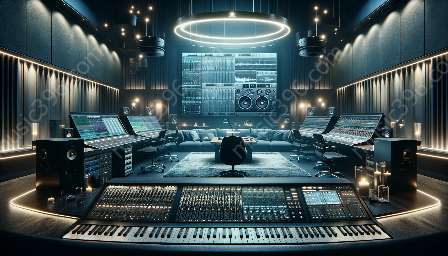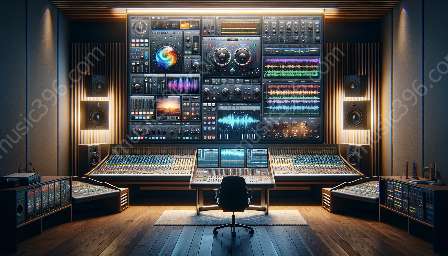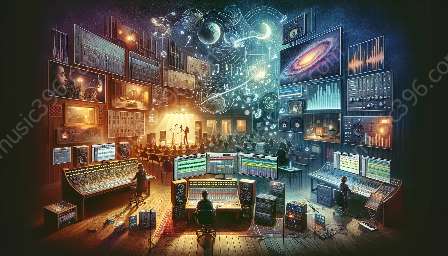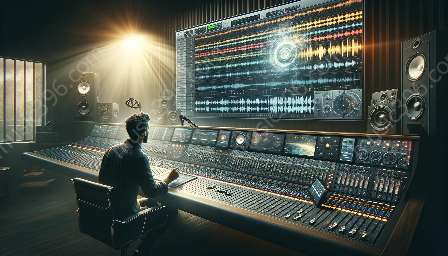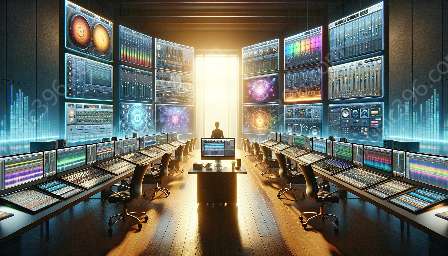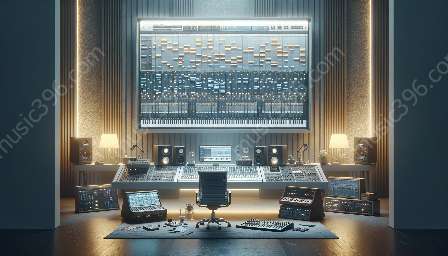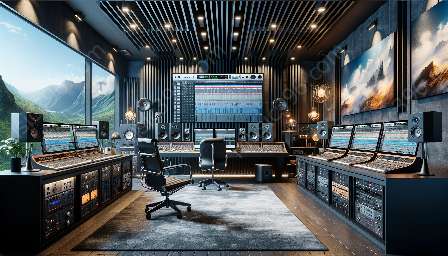Drum programming in experimental music contexts offers a wide range of creative possibilities that allow musicians to innovate and push boundaries in their compositions.
Understanding the Role of Drum Programming
Drum programming, in the context of experimental music, extends beyond traditional drum beats and patterns. It involves manipulating and layering unusual sounds, exploring unconventional time signatures, and creating rhythmic structures that deviate from the norms of traditional genres.
Exploring Unconventional Sound Design
One of the key creative possibilities of drum programming in experimental music is the ability to explore unconventional sound design. This can involve sampling and manipulating found sounds, creating custom drum kits from non-traditional sources, and experimenting with granular synthesis to generate unique percussive textures.
Utilizing Nonlinear Composition Techniques
In experimental music, the linear nature of traditional drum patterns can be challenged through nonlinear composition techniques. Drum programming allows for the creation of evolving rhythms, generative sequences, and aleatoric elements that can introduce unpredictability and complexity to the music.
Integrating Electronic and Acoustic Elements
Experimentation with drum programming enables the seamless integration of electronic and acoustic elements within a composition. By blending organic percussion with electronic elements, musicians can achieve a hybrid sonic palette that transcends typical genre boundaries.
Enhancing Expressive Dynamics
Drum programming in experimental music provides the opportunity to enhance expressive dynamics through the use of velocity modulation, parameter automation, and micro-timing adjustments. This level of control allows for the creation of intricate rhythmic nuances and subtle variations that contribute to the overall depth of the music.
Techniques for Drum Programming in DAW
Modern Digital Audio Workstations (DAWs) offer a plethora of tools and techniques for drum programming, catering to the specific needs of experimental musicians. Some of the notable techniques include:
- Sample Manipulation: DAWs provide advanced sample manipulation features that allow users to stretch, pitch-shift, and manipulate drum samples to achieve desired sonic characteristics.
- Modular Drum Sequencing: Modular drum sequencing tools within DAWs enable the creation of complex rhythmic patterns by interconnecting various modules and triggering parameters.
- Granular Synthesis: DAWs equipped with granular synthesis capabilities empower musicians to delve into the creation of textural percussive elements through granular processing of samples.
- Parameter Automation: The ability to automate parameters such as filter cutoff, resonance, and envelope settings facilitates dynamic and evolving drum programming within a DAW environment.
- Probability and Randomization: DAWs offer features for introducing probability and randomization into drum patterns, allowing for the generation of unpredictable rhythmic variations.
Pushing Boundaries with Digital Audio Workstations
Digital Audio Workstations (DAWs) serve as powerful creative hubs for experimental drum programming, offering a wide array of features and functionalities to push the boundaries of traditional percussion arrangements. Some ways in which DAWs facilitate innovative drum programming include:
- Real-Time Performance: DAWs allow for real-time manipulation and parameter control, enabling musicians to perform and sculpt drum patterns with immediacy and expressiveness.
- Integration of External Hardware: Many DAWs provide seamless integration with external drum machines, synthesizers, and controllers, expanding the sonic possibilities for experimental drum programming.
- MIDI and Audio Editing: Advanced MIDI and audio editing capabilities in DAWs empower users to fine-tune drum performances, edit note velocities, and experiment with rhythmic phrasing.
- Visualization and Arrangement: Visual aids and arrangement tools within DAWs assist in the visualization and organization of complex drum programming, allowing for easier management of intricate rhythmic structures.
- Custom Scripting and Programming: Some DAWs support custom scripting and programming, providing advanced users with the ability to create custom drum sequencing algorithms and unconventional rhythmic patterns.
Conclusion
The creative possibilities of drum programming in experimental music contexts are vast and multifaceted. By leveraging the capabilities of modern Digital Audio Workstations and embracing unconventional techniques, musicians can explore new sonic territories, defy traditional constraints, and ultimately expand the frontiers of musical expression in the realm of experimental music.

